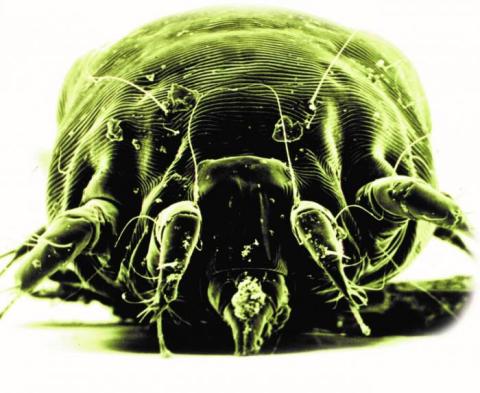Sheep scab is an acute or chronic form of allergic dermatitis caused by the faeces of sheep scab mites (Psoroptes ovis). The mites are just about visible to the naked eye and can only remain viable off the host (sheep) for 15-17 days. The sheep is the only host where the mites can complete their lifecycle, though there is evidence that they can remain viable on cattle. The lifecycle takes 14 days and the population of mites can double every six days.
Sheep scab is a major source of economic loss in affected flocks and is a serious threat to sheep welfare. Infestations can be very debilitating with significant loss of condition, secondary infections, hypothermia and eventually death. Sheep scab is a notifiable disease in Scotland.
It can be contracted via any contact with live mites, so there are number of transmission risks.
- Sheep to sheep contact is the main source of disease spread, but contaminated trailers and lorries are also a risk.
- The mites can live in wool tags for up to 16 days, making rubbing posts and areas, as well as brambles and bushes, a source of infection to other sheep.
- Shearing, scanning or other shared equipment, including greasy overalls and moccasins can also spread the mites.
Sheep scab is mainly a winter disease with most cases occurring between September and April, although can occur at any time of the year, particularly on full fleeced animals such as lambs and the ‘ridges’ of longer fleece on poorly shorn sheep.
Clinical Signs
During the early stages of sheep scab, mite numbers are low and infestations are not obvious, with animal often appearing clinically normal. Sheep may be restless, rubbing against fence posts, have soiled and stained areas of wool, toss their heads or have deranged or tags of fleece. At these early stages, sheep can look perfectly normal and can unknowingly be introduced to a flock. In fact, up to 60% of a flock can be infected before any clinical signs are seen, which can take several months.
Later stages of infestation see high mite numbers and lesions spread as the mites move to the edge of the lesions to find new food sources. Rubbing and head tossing becomes more and more excessive, areas of wool loss may appear, often with open, bleeding wounds. Sheep rapidly lose condition and serious cases will start fitting.
More in SCOPS TECHNICAL MANUAL, Chapter 4.4.



